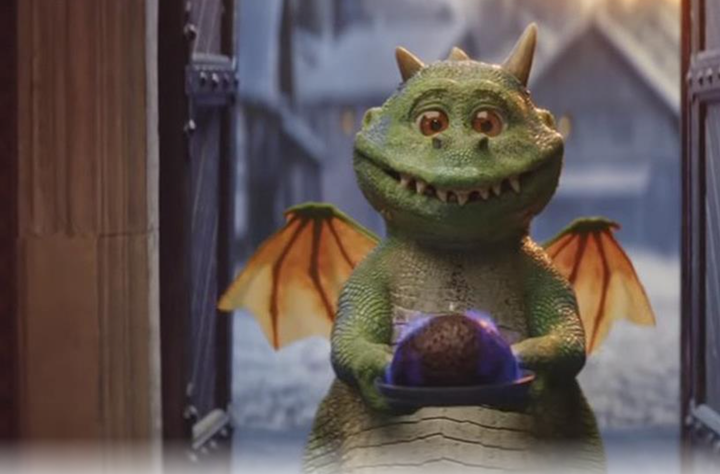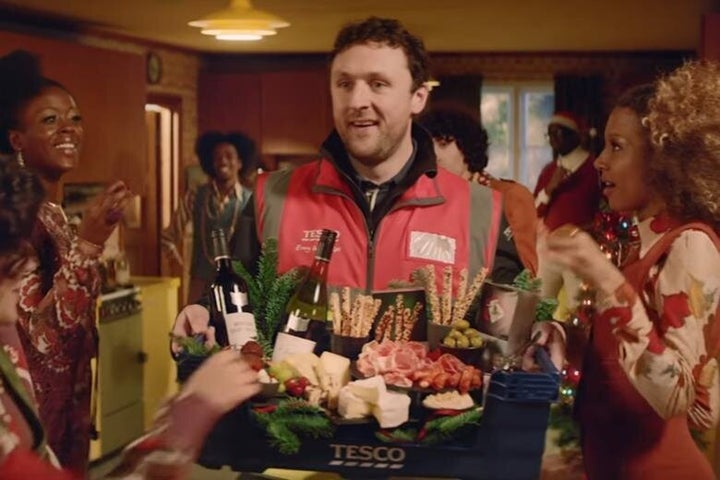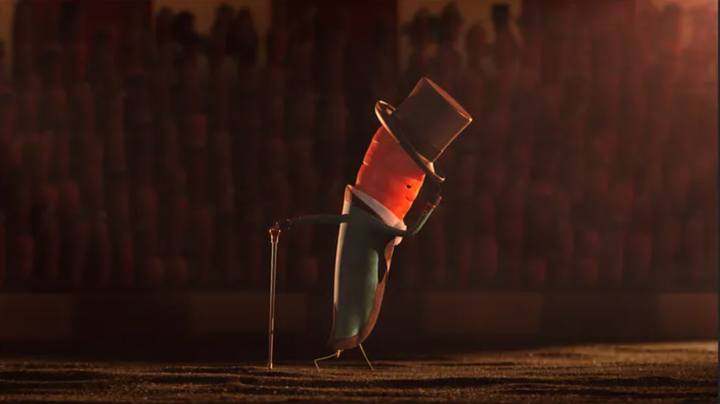
Excitable Edgar breathed his fiery breath over a crowded John Lewis dinner party, while Aldi’s Kevin the Carrot sang his heart out to Robbie Williams... the Christmas ads that delighted us in 2019 wouldn’t fare so well in 2020 – a year in which we’ve all had to learn a whole new code of social conduct.
The pandemic has posed a significant problem for the supermarket and high street giants who famously plan their big budget festive campaigns around a year in advance.
So what can we expect from this season’s offerings? Look out for escapism and community, ad industry insiders have told HuffPost UK – as brands scramble to change their plans last minute to ensure they’re sensitive to the “cultural moment”. And presumably edit out any stolen mistletoe kisses.
The king of Christmas advertising, John Lewis, is being characteristically evasive about its 2020 plans, telling HuffPost UK we’ll have to wait for the campaign to hit TV screens. But we’ve managed to track down two industry insiders to give us the gossip elsewhere: Raquel Chicourel, chief strategy officer at Grey London, the advertising agency behind the M&S Food ad, and Simon Elborne, executive producer at Outsider, the production company who has made campaigns for Sainsbury’s, H&M and Harvey Nichols in the past.
Grey London has been working with M&S Food and Very, among others, for Christmas 2020, confirms Chicourel, and while Elborne is tight-lipped about his clients – “it would spoil the surprise and the fun” – he’s been fortunate to see most of the scripts in the industry this year, “bar a few of the bigger ones.”
After a tough 2020, you’ll be relieved to hear most retailers are avoiding tear-jerking Man on the Moon-type ads, like John Lewis in 2015. “There’s a real drive to make people feel good,” says Elborne of the scripts he’s seen. “Brands are trying to be positive, to capture people’s imaginations and create hope.”
The dominant theme this year is escapism and the “spirit of Christmas”, he adds – and there’ll be little or no mention of the big C. “Nothing I’ve seen is in any way connected to the real experience we’re having of this pandemic.”
“You can’t show families mingling or strangers hugging each other. You just can’t.”
Themes of family and “the gift of giving” are there as always, he says, but expressed in different ways. We’re also likely to see a “dialled up” focus on community spirit, reflecting the closeness we’ve all gained through this shared experience, without overly referencing Covid-19.
Some brands may take a more nostalgic approach, predicts Chicourel. “That happened in 2009 on the back of the global financial crisis,” she said. “We saw a lot of brands doing that and finding success with it. That might be something where history repeats itself.”
And, due to restrictions across the UK, brands are likely to be cautious when it comes to showing Christmas parties and group gatherings – in case restrictions and social distancing are tightened further by the time we see the ad on TV.
Whatever goes on air needs to reflect the rules of the moment, says Chicourel. “If the country is in a lockdown or if there are a number of local lockdowns, you can’t show families mingling or strangers hugging each other. You just can’t.”

The usual schedule for Christmas ads – from planning to production – was disrupted by the pandemic, potentially throwing a spanner in the works for companies who like to get ahead.
“There are rumours that John Lewis starts the process the year before and, by January 1, has the campaign wrapped,” says Chicourel. “I’m not sure that’s true, but the majority of our clients start planning around January.”
Concepts usually take six weeks to plan, and this means considering merch – Kevin the Carrot became a bestseller for Aldi – and social media posts, too.
By late January, Chicourel was already holding meetings with clients to raise the Covid alarm. Two months later, they were seriously putting the breaks on, as the pandemic sunk the advertising industry – and the world – into uncertainty.
“Back in March, we didn’t know how bad this virus was, or how able we were going to be in terms of even having access to food,” she says. “It was actually really scary, if you look back on it.” The uncertainty meant Chicourel and her clients took a lot longer to settle on a concept than they would in a normal year.
“There was a lot of reflecting,” she says. “There was a question to ask about whether people will actually want to see a big Christmas production asking people to spend their money on retailers, at a time when there’s a rise in unemployment and a humanitarian and economic crisis.”
This has been a trend across the industry, says Elborne. “A lot of brands have chosen certain ideas and then changed their minds.”
“There was a question to ask about whether people will actually want to see a big Christmas production.”
Christmas ads are often filmed in spring or early summer, but the delay on scripts – coupled with the nationwide lockdown – has caused a schedule shift.
Many brands delayed filming until autumn this year, says Elborne, some even within the past fortnight. It means certain visual elements may not be possible now. “A lot of ideas across all film require CGI and visual effects, but those layers of film can take a long, long time to make and to get right,” he says.
And even the filming itself has been different. As we’ve seen on TV shows like Eastenders and Strictly Come Dancing, production companies have to ensure the safety of performers and crew. For ads, this means following guidelines from the Advertising Producers Association. “There’s a lot of methods we’ve used, from isolation prior to a shoot, to creating bubbles and making sure everyone on set is healthy, prior to coming on set,” says Elborne.
Some brands will face challenges if they filmed earlier in the year, says Chicourel, who believes on-screen rule-breaking is a problem. “If you’ve unfortunately shot that prior to Covid or the rules coming into place, that footage is best possibly saved until next year or whenever we have a vaccine,” she says.

It’s been a turbulent time for retail, says Elborne, with clear “winners” and “losers” in the pandemic – and this may be obvious from the scale of their Christmas extravaganzas.
“If you look at some of the supermarkets, they have done incredibly well from the pandemic,” explains Elborne. “Tesco, Ocado, those kinds of brands, they’ve really benefited and grown their businesses as a result of the last eight months, so they have invariably been able to invest more in their advertising.”
That’s not to say the department stores won’t dig deep. “There’s also a school of thought that during times of economic downturn, brands need to spend more money and be more present,” he adds.
When they do finally launch after Halloween, this year’s Christmas ads may gain more attention that ever, suggests Chicourel, because we’re all desperate for some new entertainment – especially with the dearth of new TV and film.
“With the content fall we’re expected to have around that period of time, we’re going to run out of things to watch on Netflix and Amazon Prime,” she says. “I think what’s going to be left is these amazing Christmas ads to get the nation talking.”
And Elborne is confident we won’t be disappointed. “It’ll be a really strong year, but it’ll be a different year, because of how people perceive it,” he says. “We’re very fortunate to be making a few and I think they’re going to be great. I’m really excited to see them out there.”